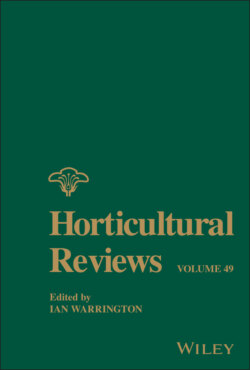Читать книгу Horticultural Reviews, Volume 49 - Группа авторов - Страница 17
IV. HISTORY AND DISTRIBUTION OF OAKLEAF HYDRANGEA
ОглавлениеOakleaf hydrangea was first encountered by William Bartram during his 1773–1777 exploration mission throughout the southeastern United States. He published the first description of the species in his monograph describing his travels (Bartram 1791). The first specimen he described was located along the “brook called Sweet Water” (which is possibly now known as Sweetwater Creek, west of Macon, GA) in south‐central Georgia (Bartram 1791). The species was introduced to Europe in 1803 but details of the export remain elusive (Lawson‐Hall and Rothera 1995).
According to the USDA Plants Database and maps from McClintock (1957), the natural range of occurrence for the species covers six states: from Tennessee south along the western edge of Georgia into the panhandle of Florida and across to the western edge of Mississippi, south to the border of Louisiana and Mississippi, only crossing the Mississippi river as disjunct populations in certain locations in Louisiana. No fine‐scale map exists for the species, although locations of herbarium specimen collections inform where certain populations have existed historically (Figure 1.3).
Hydrangea quercifolia requires well‐drained soils and is typically found in the understory of undisturbed deciduous forest stands on steep riparian hillsides, outcroppings, or bluffs (Figure 1.4). The species is currently found in relatively disjunct populations except in the northern half of Alabama, where it grows as a nearly continuous population (A. Sherwood, pers. observ.). H. quercifolia has been observed growing directly out of rock with little to no apparent soil present, indicating that rich soil is not a requirement for plants to grow and thrive. Although H. quercifolia often tends to occur in calcareous soil, this does not appear to be a requirement nor a limiting factor to its natural distribution, as populations have also been observed growing in soils with various mineral compositions as well as rich organic soils on the banks of rivers. In these cases, the absence of stagnant or slowly moving water does seem to be a requirement, as H. quercifolia has only been observed along intermittent (seasonal) streams or quickly moving water and never in accordance with slowly moving rivers, standing water, or saturated soil.
Hydrangea quercifolia appears to form clonal clumps in the wild, which are likely propagated by layering of lower branches and rhizomes, and the ramets may or may not be still attached to the parent plant. A similar phenomenon has been observed for H. arborescens (Pilatowski 1982) although this was not studied in detail. Clonal spreading has also been shown to occur in H. paniculata in Japan (Kanno and Seiwa 2004), which is similar in growth habit to H. quercifolia in that they both are able to form small trees or large slowly spreading shrubs. Kanno and Seiwa (2004) found that the relative distribution of clonal and seedling recruitment was largely due to light intensity and leaf litter, which were increased in forest gaps and decreased as gap succession proceeded. H. paniculata requires high light intensity to flower in comparison to H. quercifolia, which is more tolerant of heavy shade (Dirr 2004). However, H. quercifolia seeds are about half the size of H. paniculata (Hufford 1995), which decreases their ability to germinate in thick leaf litter (Kostel‐Hughes et al. 2005). This suggests that the dynamics of clonal growth in H. quercifolia may also be affected by forest gap dynamics, although the response may differ from that observed in H. paniculata. This response could be manifested in H. quercifolia as an overrepresentation of clonal propagation in heavily shaded forests and higher seed representation on ridges with less competition for light. These responses may be due to decreased flowering and, therefore, decreased seed production in heavy shade, as well as longer shoot growth under high competition growth conditions (A. Sherwood, unpubl.), which could contribute to increased propagation by layering. However, little is known about seed dispersal in oakleaf hydrangea, and knowledge of this phenomenon would contribute to an understanding of propagation in the wild.
Figure 1.3 Map of historic herbarium specimens and recent samplings. Small open circles indicate approximate location of herbarium specimens collected between 1882 and 2017. Larger solid points indicate location of oakleaf hydrangea confirmed by the author in 2017 and 2018. Note: many of the herbarium specimen collection sites were also searched but Hydrangea could not be located; this is discussed in the Conservation section.
Figure 1.4 Photographs of Hydrangea quercifolia in its natural habitat. Left photograph shows representative seasonal streambank population. Center photograph shows flowering H. quercifolia growing out of bedrock. Right photograph shows small population growing out of near‐vertical bluff.
(Source: Photo credits: A. Sherwood.)
